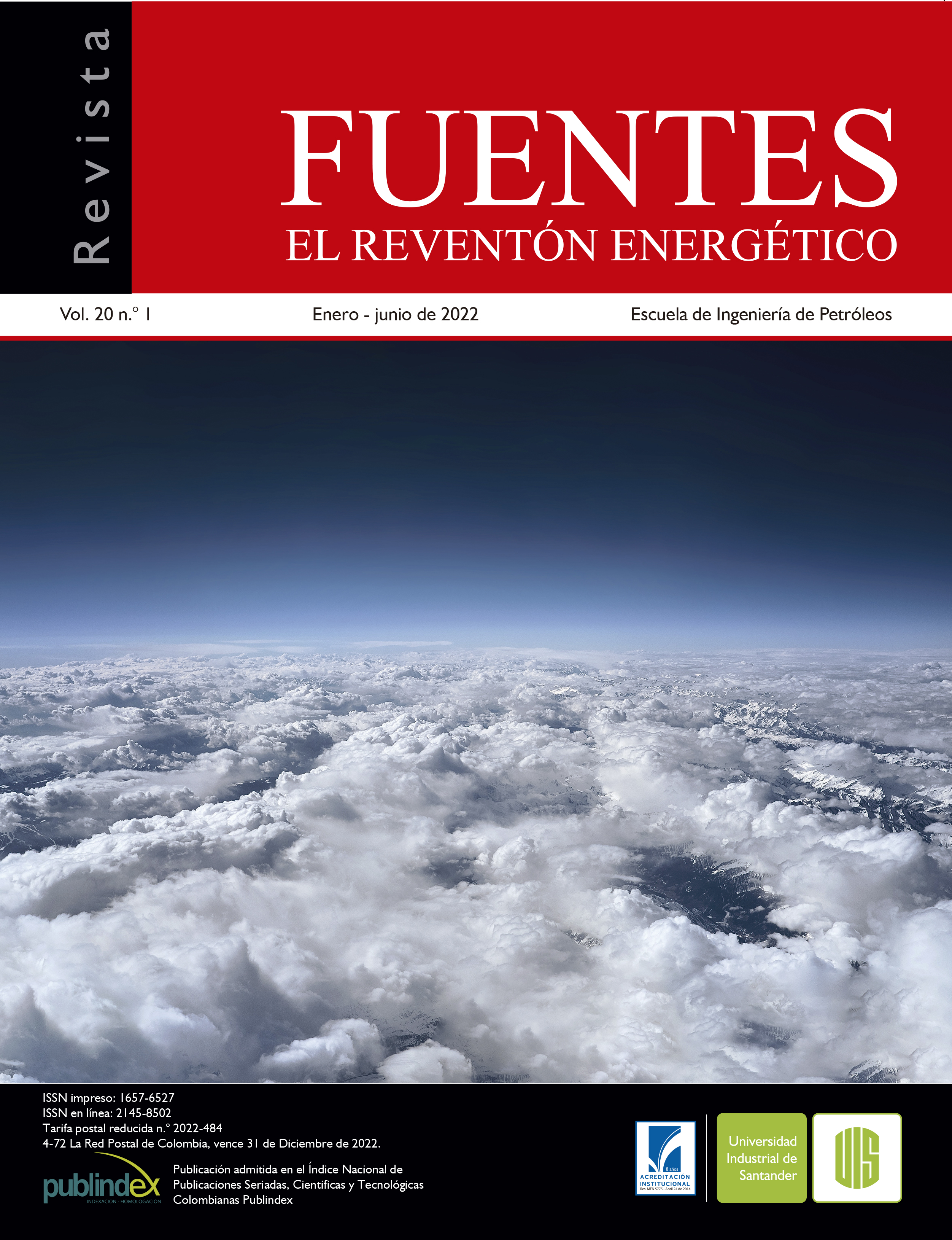Performance of natural banana starch, in the control of physical properties in a polymeric drilling fluid at the laboratory
Published 2022-06-30
Keywords
- Banana peels,
- Banana starch,
- Drilling fluid,
- Polymeric mud,
- Rheology
- Filtering control,
- Lubricity ...More
How to Cite
Copyright (c) 2022 Escuela de Petróleos - Universidad Industrial de Santander

This work is licensed under a Creative Commons Attribution 4.0 International License.
Abstract
Polymeric drilling fluids are one of the most widely used products in the oil industry, however, the additives used for this mud such as PAC-L and PAC-R raise the cost of formulation. It seeks to evaluate the performance of banana starch in the control of physical properties such as rheology, lubricity and filtering. For this, starch was obtained from the synthesis of banana peel, a base fluid was designed in order to compare it with 10 other drilling fluids in which banana starch was used as a substitute for the PAC-L and PAC additives. -R at different concentrations. Rheology, lubricity and filtering tests were performed. From this, the optimal concentration of starch that should be used to obtain a drilling fluid similar to the base mud of the study was determined. The concentration of banana starch that maintains properties with the fluid under study (API Filtration, Plastic Viscosity, Yielding Point, Gels and lubricity) is 5.5% banana starch. This concentration was chosen with the most relevant tests among those mentioned above because they ensure adequate performance of the drilling fluid, which allows it to achieve good rheological and thixotropic characteristics with which operational problems such as mud loss, formation damage, sticking of tubing, overheating in the string, among others. These results confirm that “macho” plantain starch can replace PAC-L, PAC-R and Xanthan gum, being technically feasible for the use of this additive in field operations. Likewise, it can become economically viable; For this reason, it is recommended to carry out a financial analysis that helps confirm all the variables studied in a research project and that is thus feasible both technically and economically.
Downloads
References
- Ahmed, N., Alam, M. S., & Salam, M. (2020). Experimental analysis of drilling fluid prepared by mixing iron (III) oxide nanoparticles with a KCl–Glycol–PHPA polymerbased mud used in drilling operation. Bangladesh: Journal of Petroleum Exploration and Production Technology.
- American Petroleum Institute. (2017). Recommended pratice for field testing water based Drilling fluids. Washington.
- Ariza, E., Castro, A., & Gómez, J. (2013). Factibilidad del uso del almidón de achira como agente controlador de filtrado en lodos de perforación base agua. ION, 26(1), 63, 71. Obtenido de http://www.scielo.org.co/scielo.php?script=sci_arttext&pid=S0120-100X2013000100007&lng=en&tlng=es.
- Chang, R., & Goldsby, K. A. (2017). Química. Mexico D.F: McGRAW-HILL.
- Efraín, B. (1985). El Pozo Ilustrado. Caracas, Venezuela: Filial de Petróleos de Venezuela, S.A.
- Mazzeo, M., Alzate, A., & Marin, M. (2008). Obtención de Almidón a partir de residuos poscosecha del plátano Dominico Hartón Musa AAB SIMMONDS. Vector, 3, 57-69. Obtenido de http://vector.ucaldas.edu.co/downloads/Vector3_6.pdf
- Melo, D., Yennifer, T., Serna, J., & Torres, L. (2015). Aprovechamiento de pulpa y cáscara de plátano (Musa Paradisiaca SPP) para la obtención de maltodextrina. doi:10.18684/BSAA(13)76-85
- MI - SWACO. (1998). Drilling engineering. Texas: Texas.
- Okoro, E., Dosunmu, A., & Iyuke, S. (2018). Data on cost analysis of drilling mud displacement during drilling operation. doi:10.1016/j.dib.2018.05.075
- Santivañez, J., Cano, W., Ordoñez, D., & Bohorquez, A. (2019). Evaluación del uso de almidón de papa como aditivo para lodos de perforación. El Reventón Energético, 17(1). Obtenido de https://dialnet.unirioja.es/servlet/articulo?codigo=7018585
